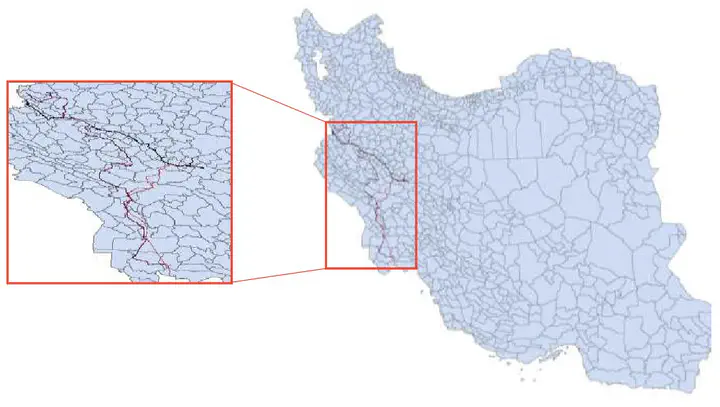GIS-based sustainable model for dangerous goods transportation:A case study of crude oil transit
 The case study
The case study
Abstract
Today, transit is an undeniable part of business world that has been devoted considerable share of resources like energy, time, andmoney to itself. It also has environmental and social effects. A little enhancement in the transportation activity during logistics ifgoods can lead to significant save in the long term. Transportation of dangerous goods has more important than any goodstransportation because of inherently hazards that joint with them. The aim of this paper is to develop a model that can select the bestroute between origin and destination with considering economic, environmental, and social parameters. To evaluate economiceffects, cost of establishment, maintenance and revenue has been considered. To calculate environmental effects used CO2 release,and to assess social effects, has been used employment and population exposure as the risk of transportation. This model has beenimplemented on the real case study and the best route to crude oil transit has been suggested with using two optimization methods.